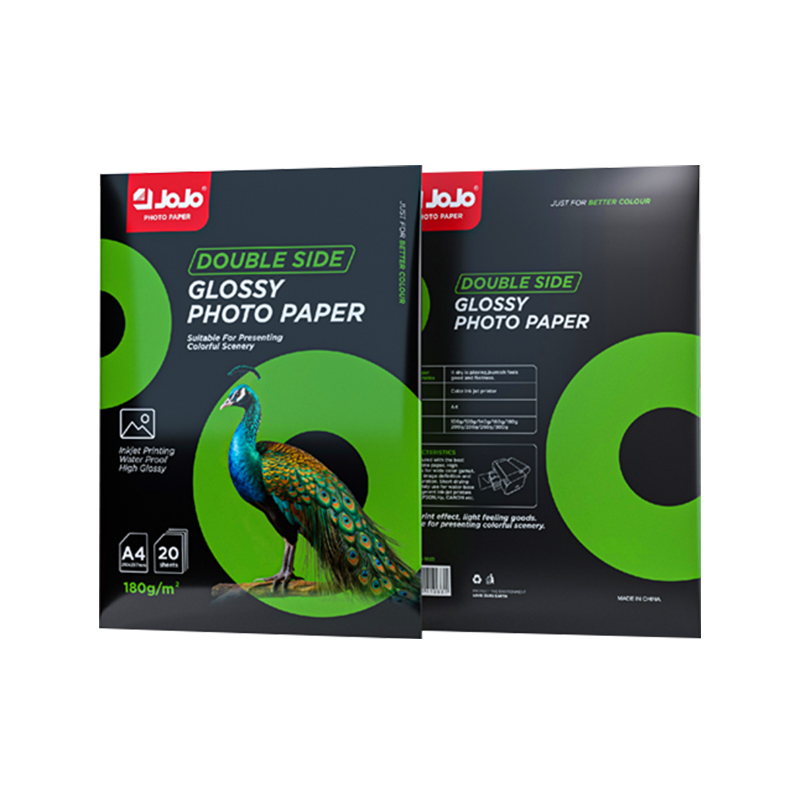If you need any help, please feel free to contact us
The Importance Of Dimensional Stability In Wide-Format Printing
In the world of wide-format printing, where accuracy and consistency are crucial, the dimensional stability of printing media plays a significant role in determining the quality and usability of final outputs. Dimensional stability refers to the ability of a material to maintain its original dimensions under various environmental conditions, such as temperature, humidity, and mechanical stress. Without adequate dimensional stability, issues such as warping, curling, and misalignment may arise, affecting the precision and visual integrity of prints. This becomes especially important when dealing with diverse media types such as super glossy photo paper, 80mm thermal paper, and sticky thermal paper.

Wide-format printing typically involves materials that are fed through large-scale printers and exposed to rapid ink absorption, heat from the printhead, and high-speed movement. These factors can cause certain materials to expand or contract, pilot to poor registration, inaccurate color alignment, or unwanted paper deformation. For industries such as advertising, photography, labeling, and packaging, these defects may result in waste or the need for reprinting, driving up production costs.
Super glossy photo paper, known for its high sheen and vibrant color reproduction, is a popular choice for photographic and promotional applications. However, this type of paper is particularly sensitive to humidity and temperature changes. The resin-coated surface and multi-layered structure of super glossy photo paper must be engineered to resist curling and edge lifting. If the coating absorbs moisture unevenly or reacts to thermal shifts during printing, the paper may buckle or ripple, causing visible distortions in the final image. To ensure consistent results, manufacturers often use specific base paper formulations and coating techniques that enhance dimensional stability during wide-format processing.
Another widely used media type is 80mm thermal paper, commonly found in receipt printers, kiosk systems, and POS terminals. Although not typically associated with photo-quality printing, thermal paper still requires dimensional stability, especially in high-throughput environments. During the printing process, the thermal head applies heat directly to the coated paper, activating the image layer. Any movement, stretching, or shrinking of the paper during this process can advance to text misalignment or incomplete printouts. Moreover, as wide-format thermal applications expand into labeling and packaging, maintaining material integrity across the print width becomes even more critical.
Sticky thermal paper, or adhesive-backed thermal paper, introduces an additional layer of complexity due to its pressure-sensitive adhesive. This type of media is widely used for logistics labels, inventory tags, and product packaging. In wide-format formats, sticky thermal paper must withstand both the heat of printing and the stress of handling without warping or detaching. The adhesive layer must remain stable without bleeding or shrinking, while the top coating must stay intact under mechanical pressure. Poor dimensional stability in sticky thermal paper can cause label misfeeds, printer jams, or wrinkled output—compromising print accuracy and production speed.
Maintaining dimensional stability across all these media types involves a combination of material engineering, environmental control, and printer calibration. On the production side, manufacturers may add anti-curl agents, improve coating uniformity, or use synthetic substrates with higher thermal tolerance. End users, especially in wide-format environments, must also store media under controlled humidity and temperature conditions to reduce the risk of distortion. Additionally, ensuring proper tension and alignment within the printer helps less media stretching and skewing during feeding.
As the wide-format printing industry continues to diversify, with more materials and use cases being introduced, the demand for dimensionally stable media will remain strong. From super glossy photo paper delivering sharp, high-saturation visuals to 80mm thermal paper producing legible receipts and sticky thermal paper enabling reliable labeling, every application benefits from precise dimensional control. Investing in stable media not only reduces printing errors and material waste but also enhances overall workflow efficiency and end-product consistency.
In conclusion, dimensional stability is a foundational property that underpins the effectiveness of wide-format printing across multiple media categories. Understanding the physical behavior of each substrate—whether it’s high-shine photo paper, thermal receipt stock, or self-adhesive labels—allows print professionals to make informed decisions, ensure compatibility with printing equipment, and deliver outputs that meet technical and visual standards.

 English
English Español
Español 中文简体
中文简体 Português
Português

